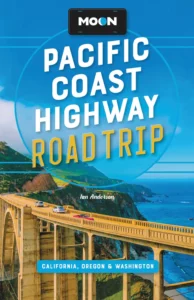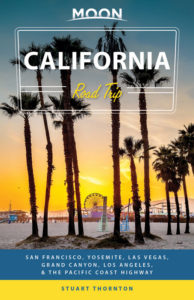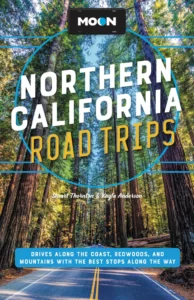Point Lobos to Big Sur River
Point Lobos State Natural Reserve
The sculpted headland south of Carmel Bay, now protected as Point Lobos State Natural Reserve (831/624-4909, daily, $10 per car), holds one of the few remaining groves of native Monterey cypress, gnarled and bent by the often stormy coastal weather. The name comes from the barking sea lions (lobos del mar) found here by early Spanish explorers; hundreds of seabirds, sea lions, sea otters, and—in winter—gray whales are seen offshore or in the many picturesque sea-carved coves.
The entrance to the reserve is along Hwy-1, three miles south of the Carmel Mission. In summer the park is so popular that visitors sometimes have to wait in line outside the gates. If possible, plan to come early or during the week. Whenever you can, come: Point Lobos has been lauded as the greatest meeting of land and sea in the world, and crowded or not it’s definitely a place you’ll want to see. Point Lobos has endless vistas up and down the rocky coast, and if you don’t mind a short hike, there are a number of magical beaches hidden away at its southern end.
Garrapata State Park
The northern stretches of Big Sur are marked by the rugged coves, redwood forests, and sandy beach at Garrapata State Park, four miles south of Point Lobos. Though it’s just minutes from Carmel, Garrapata could be light-years away from the crowds of shoppers and gallery-goers, but the two-mile-long beach here is pristine and easy to reach, yet generally empty. Winter wildlife-watchers sometimes see gray whales migrating close to shore.
The highway clings to the coast for a dozen amazing but uneventful miles, passing a few languid cattle and an occasional vacation home before coming upon one of Big Sur’s many unique sights, the massive volcanic hump of Point Sur, 19 miles south of Carmel. Though it’s not exactly scenic or beautiful, it definitely helps you keep your bearings. A symmetrical 361-foot dome, Point Sur is capped by a 128-year-old lighthouse (831/625-4419, tours Wed. and Sat.-Sun., $12 adults), which has been preserved as a state historic park.
Andrew Molera State Park
Spreading along the coast at the mouth of the Big Sur River, 20 miles south of Carmel, Andrew Molera State Park is a grassy former cattle ranch on the site of one of Big Sur’s oldest homesteads. In the 1850s, immigrant Juan Bautista Roger Cooper bought the land; in 1861, he built a cabin, which still stands along Hwy-1 near the park entrance. Well-blazed but sometimes boggy trails wind along both banks of the river down to the small beach, and there are quite a few nice places to camp (walk-in only). In winter, the park is also a popular resting spot for migrating monarch butterflies.
California’s Central Coast Travel Map

















